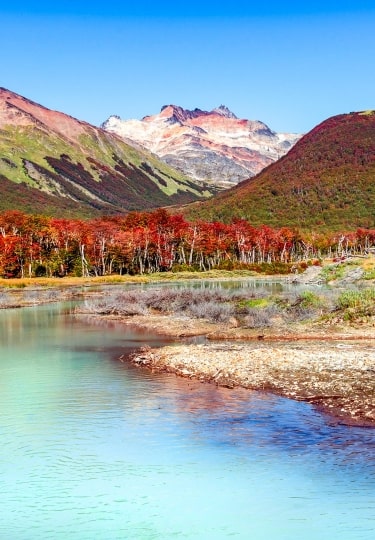Patagonia is a place, but it’s also a feeling. If you’ve ever had the urge to venture beyond where most people go, to see what it’s like on the extremes of the earth, or to stand in landscapes unrivaled anywhere else on the planet, then you’ve felt the call of Patagonia.
Split between Chile and Argentina on the southern tip of South America, Patagonia includes archipelagos, fjords, icebergs, wildlife reserves, mountain ranges, and lakes which are almost totally untouched by human development. Save for a few small towns with their own fascinating histories, Patagonia is still one of the wildest places on earth.
If you’re thinking about visiting Patagonia, read on for everything you need to get started planning, plus some great suggestions on the best places to visit in Patagonia.
When’s the best time to visit Patagonia?
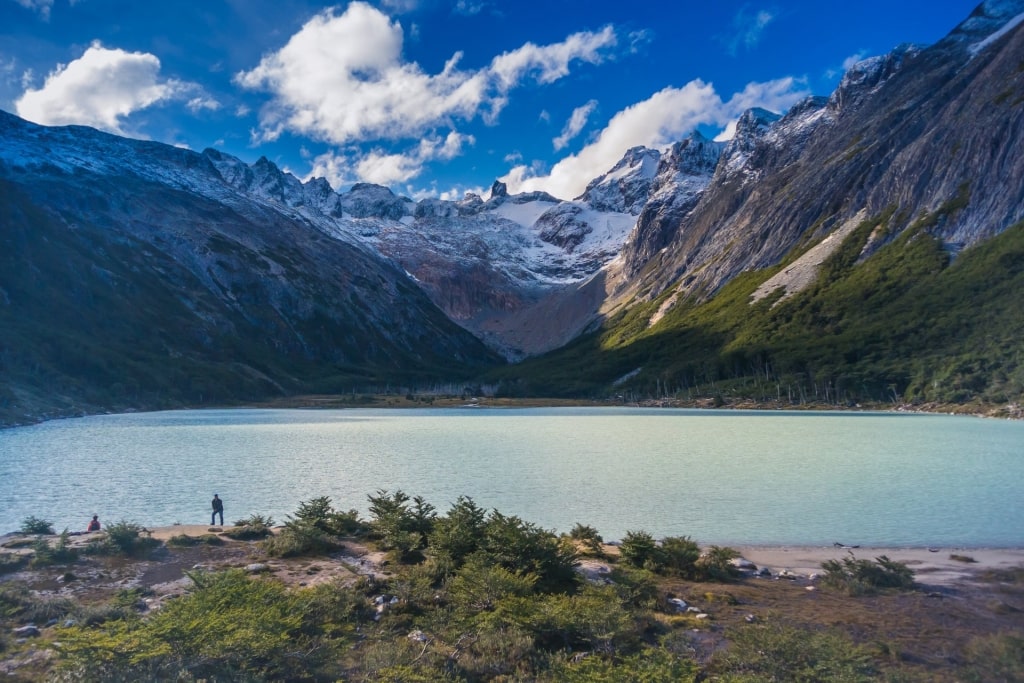
Tierra del Fuego in Ushuaia, Argentina
Because Patagonia is known for its extreme weather, the best time to visit is in the summer. Otherwise, you’ll find heavy snow, sheltering animals, and wind so fierce you can barely stand. However, remember that summer and winter are switched in the Southern Hemisphere—winter in the Northern Hemisphere is summer there.
Summer in South America is from December to March, which is also the best time to visit Patagonia.
Though wild weather is one of Patagonia’s main draws, and light snow is never entirely out of the question, those months are generally warmer due in part to the long days of sunlight. You can expect temperatures in the mid-60s to mid-70s Fahrenheit between December and March and almost no precipitation. Though wind can make it feel a bit cooler, it’s enjoyable weather for hiking and sightseeing. You’d miss out on a lot of the region’s best experiences if you visit outside of those months.
What’s the best way to see Patagonia?
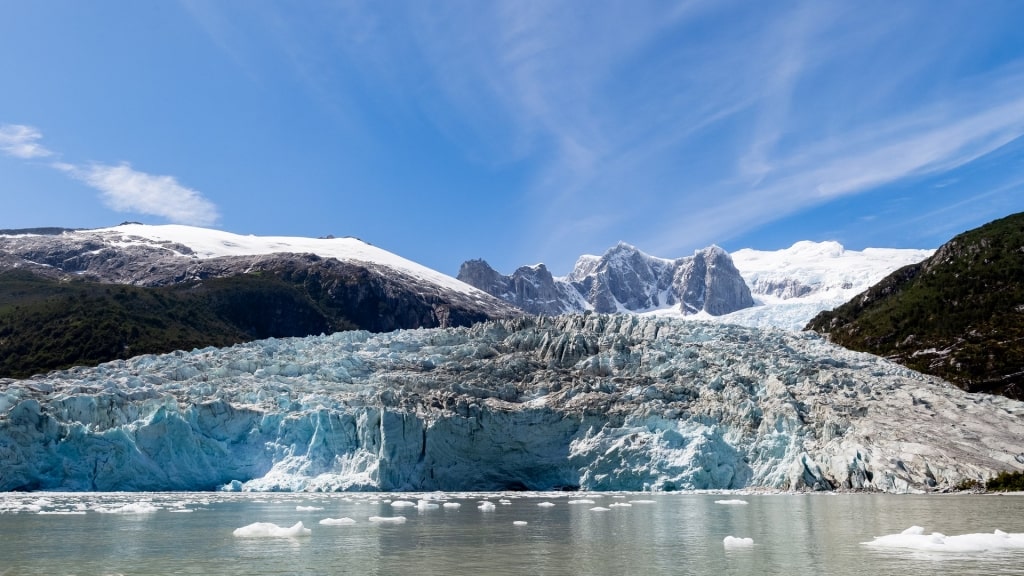
Pia Glacier
Patagonia is big, wild, and mostly undeveloped, so while you can explore it on your own, it’s quite tricky. You’d need to rent a car, arrange sometimes complicated transportation, find your way to some very remote areas, and set your own reservations for tours and park entries. It’s also going to be a lot of driving time on windy, slow roads, and can be quite challenging, especially if you don’t speak Spanish.
That’s why many people choose to visit with a cruise line that can take care of all these details. If you want to see some of the best places to visit in Patagonia, many of which are across the region’s 2,300 islands, you’ll likely want to visit on a cruise rather than choosing just a land-based adventure.
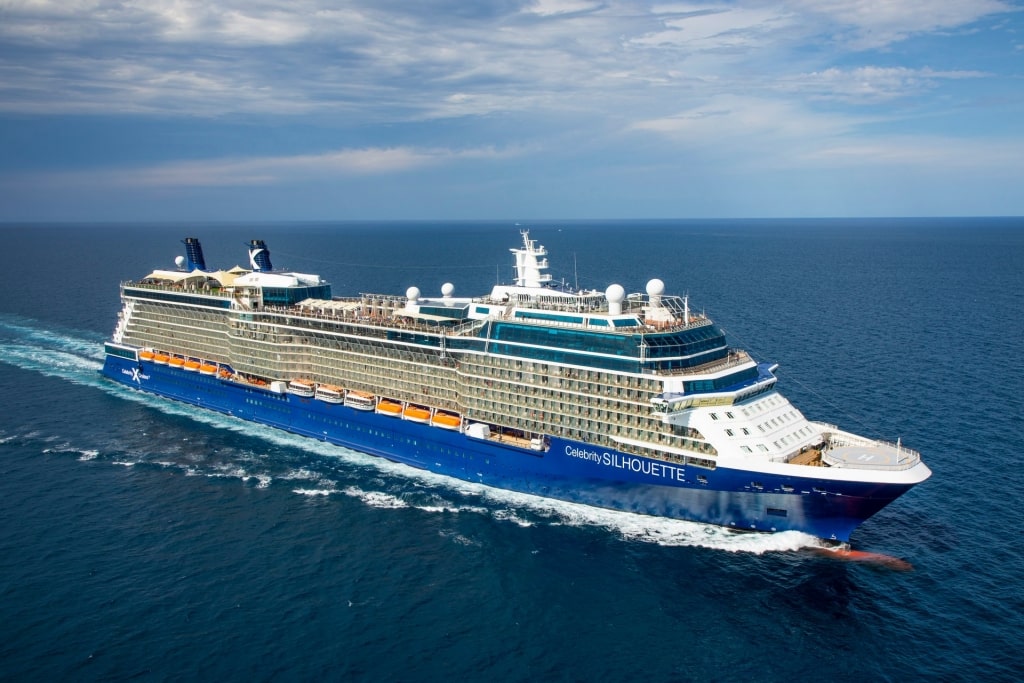
Celebrity Silhouette
Cruising allows you to see more of the region, as traveling on the water is by far the most efficient way to visit. You can fall asleep in one amazing destination and wake up in another. On a cruise, you’ll see some of the best places to visit in Patagonia that can only be accessed by water, like sea lion colonies and remote fjords. When you do want to go on land, there are shore excursions that make it easy for you to see and do what you’re most interested in.
Opting for a cruise to Patagonia also frees up your time, as there’s no need to unpack, make long drives, or check in and out of various hotels. Instead, you can spend that time doing the things that make your vacation special: spending time with your travel partners, enjoying local food and cocktails, or sitting on the deck watching some of the most beautiful landscapes in the world pass you by.
What should I pack?
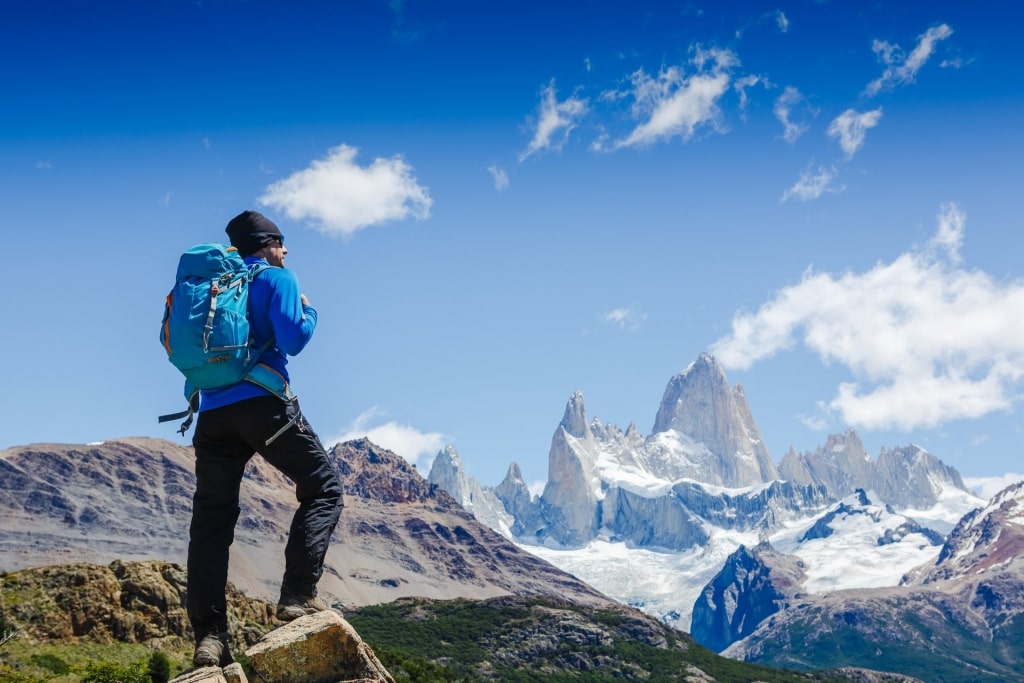
Mount Fitz Roy
Expect wind and rain in Patagonia. It’s not necessarily cold, but the strong winds can cool you down quickly, especially if you’ve worked up a sweat hiking. Bring a good waterproof jacket with a hood (most waterproof jackets will also be windproof.)
Make sure to have waterproof shoes or hiking boots, a back-up pair of shoes in case those get soaked, and some quick-drying clothing. You’ll want a quick-drying t-shirt, a quick-drying long-sleeve shirt, and a pair of hiking or outdoor pants that won’t soak up moisture.
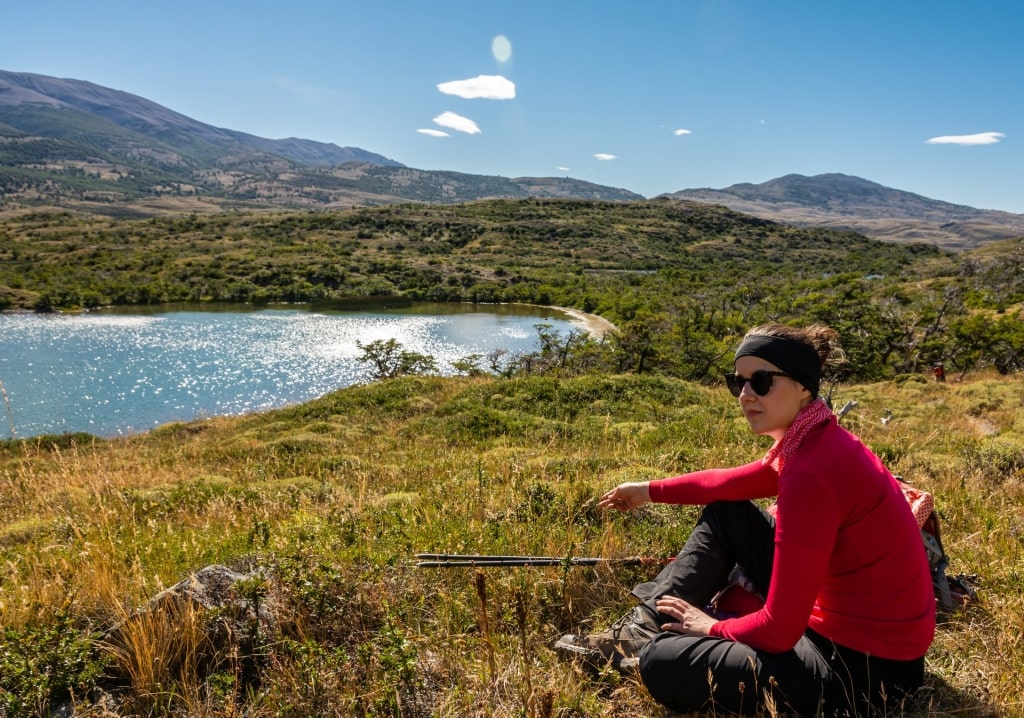
Torres del Paine National Park, Chile
Bring an insulated layer (like a light puffy jacket) and jeans in case it’s cold at night, a few everyday sweaters and shirts, and active clothing for walking around town or hiking. You’ll also want a sun hat and sunglasses, a warmer hat (like a beanie) for nighttime, and a water-resistant backpack for day trips. Don’t forget your sunscreen: you may have up to 19 hours of sunlight a day in December.
Trip and tour organizers will usually have smaller, more specialized gear available to borrow, like trekking poles and binoculars.
What are some of the best places to visit in Patagonia?
Tierra del Fuego National Park
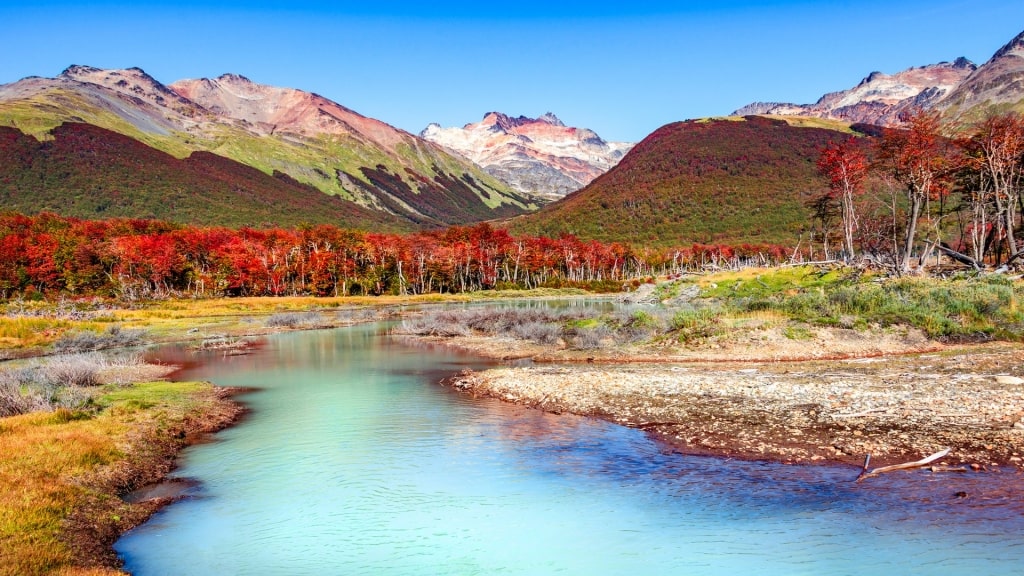
Tierra del Fuego National Park in Ushuaia, Argentina
One of the best places to visit in Patagonia is Tierra del Fuego National Park. Aside from being one of the most beautiful places on earth, Tierra del Fuego is also biologically diverse, with more than 20 mammals and nearly 100 birds thriving in the park’s harsh sub-Antarctic climate.
Whether you want to visit on foot or sail your way through the park’s archipelago, you’ll find plenty of options for tours and routes. And if you see the park from the water, you’ll be following in famous footsteps: Darwin came through this area in the 1800s as he was writing The Voyage of the Beagle (and gave the Beagle Channel its name).
Fort Bulnes
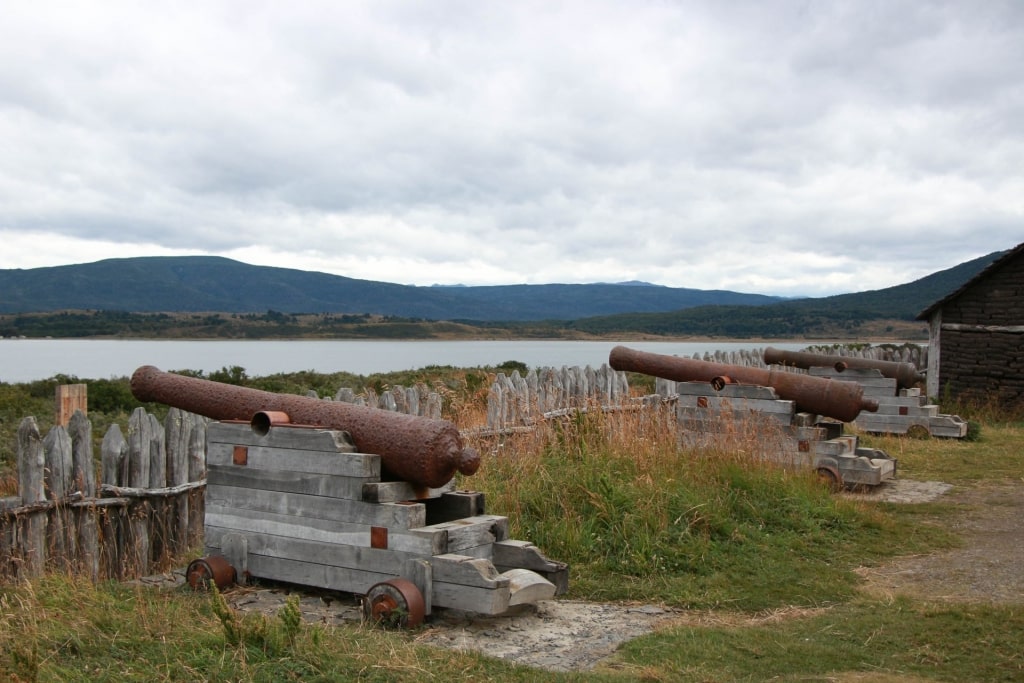
Fort Bulnes, Chile
If you love history, plan to visit Fort Bulnes near Punta Arenas—it’s one of the earliest permanent settlements in Chile. Located on a peninsula, it was intended to defend the Strait of Magellan from foreign powers who may have wanted to seize control. Because of its location, it’s home to one of the best views of the Strait of Magellan and Tierra del Fuego.
Península Valdés
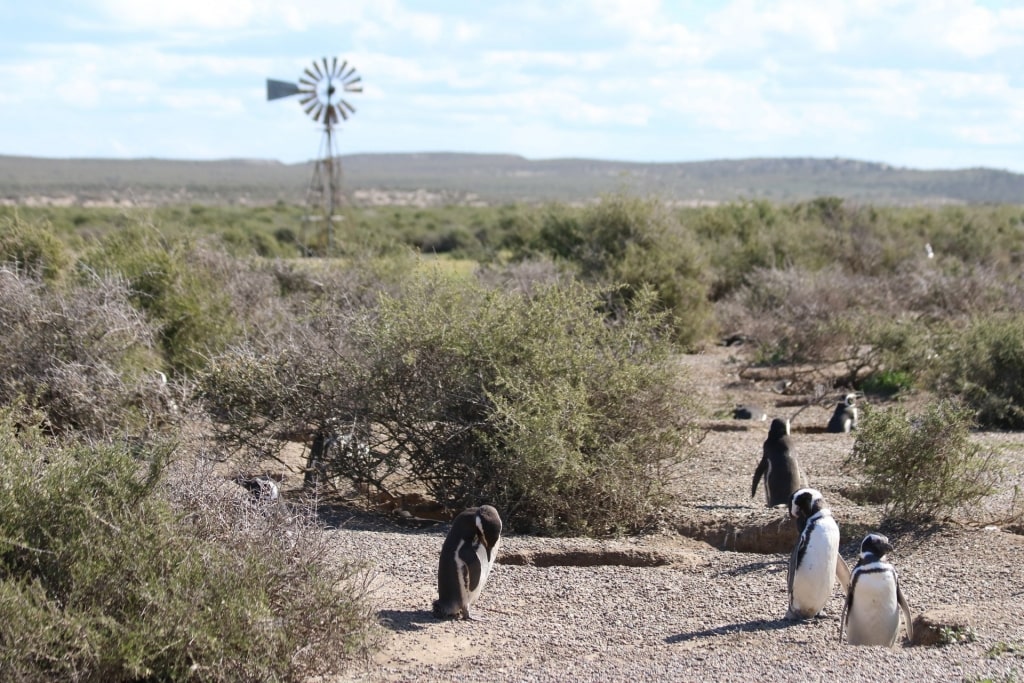
Península Valdés
Also in Argentina, the Península Valdés is truly worth a day tour if you have any time to spare. The wildlife reserve and surrounding area on the peninsula are home to sea lion and penguin colonies, plus there’s a fascinating visitors center rich with history.
Chilean Fjords
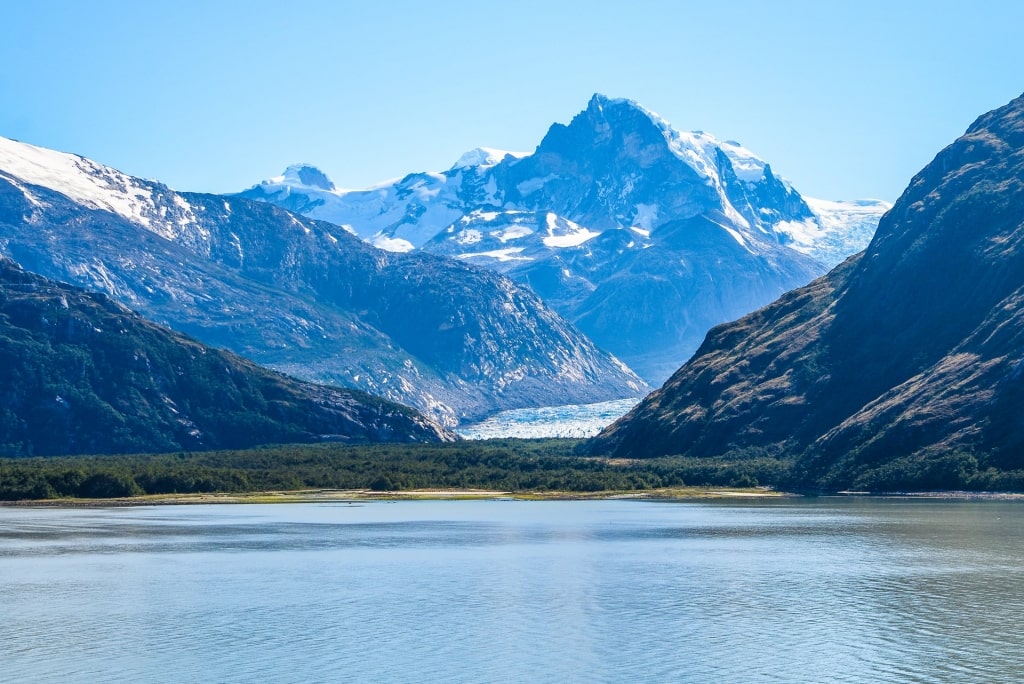
Chilean Fjords
One of the most memorable experiences for many people in Patagonia is sailing through the Chilean fjords. Seeing hundreds of islands and icebergs in the water set against the dramatic backdrop of snow-capped volcanoes and jagged mountain peaks is truly a humbling experience.
What are some of the best places to hike in Patagonia?
Patagonia is regarded as one of the world’s best hiking destinations and is a bucket-list destination for many outdoor enthusiasts. Even if you’re not a big hiker, it’s worth taking a stroll when you visit Patagonia to stand in the shadow of some of the most impressive landscapes on the planet. Because there’s such a massive variety of terrain, there are opportunities to hike for people of all levels, from all-day excursions to short, van-supported hikes.
Magallanes National Reserve
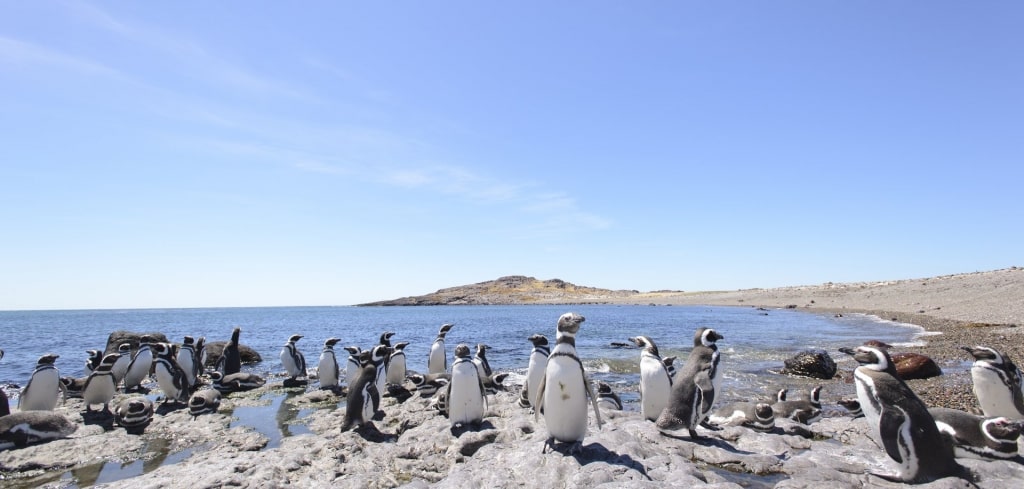
Magallanes National Reserve in Punta Arenas, Chile
A can’t-miss hiking destination in Chile is the Magallanes National Reserve, which covers nearly 50,000 acres of untouched land.
The reserve is home to some of Chile’s most famous wildlife (like condors and pumas) and has fantastic views of the Strait of Magellan and Argentina’s Tierra del Fuego. The trails aren’t always as well marked as you might find in U.S. national parks, so it’s best to go with a naturalist guide who can also teach you about flora and fauna along the way.
Punta Tombo Reserve
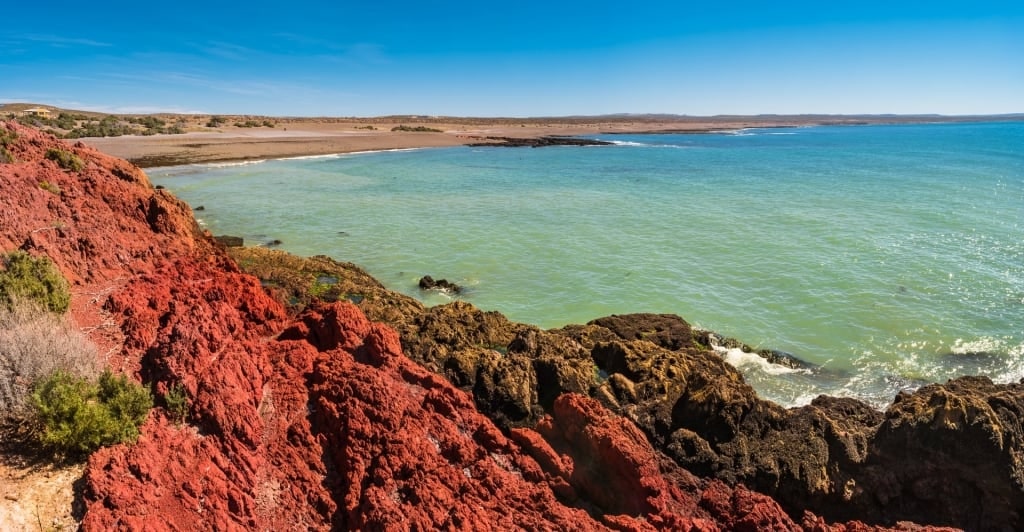
Punta Tombo Reserve, Argentina
While on the Argentinian side of Patagonia, try to find time to visit the Punta Tombo Reserve, one of the best places to visit in Patagonia if you love wildlife. The hikes here are beautiful (though sometimes chilly), and you can opt to hike around a rookery (breeding area) for Magellanic penguins. The reserve is rather remote and takes about two hours to reach from Puerto Madryn, so most tours include lunch after you’re done wandering through the reserve.
Carbajal Valley
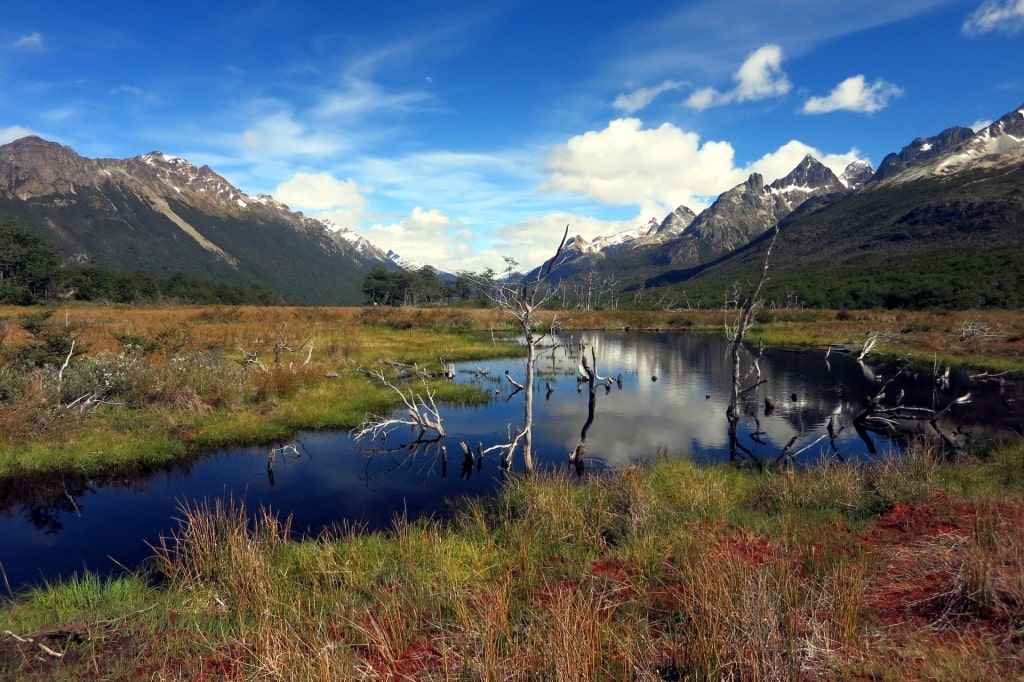
Carbajal Valley
If you don’t mind a bit of a bumpy ride—all the roads in the area about a century old, after all—then head to the Carbajal Valley. Parked between two massive mountain ridgelines, the valley is lush and beautiful, especially with the jagged peaks of the Fuegian Andes in the background.
It’s a glacial valley, which means the valley was eroded over time as a glacier slowly moved through it during the last ice age. There are several beautiful hikes and viewpoints in the valley, though you should be prepared for a long trek or a bumpy ATV ride to experience them. The journey is worth the effort, though. The valley is beautiful and rarely crowded, and for some people, getting there is the most fun part.
What kind of animals can I see?
Rare Birds
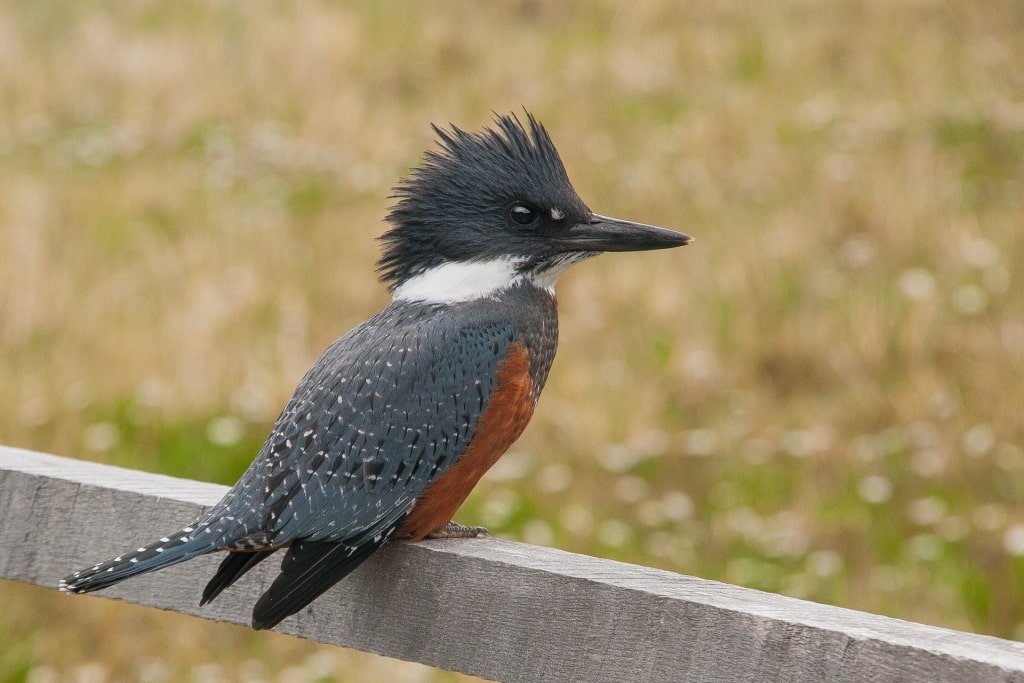
Kingfisher
If you’re an avid birdwatcher—or just interested in knowing more about some of the fascinating birds you’ll see soaring across Patagonia—head out on a birding tour in Tierra del Fuego National Park. Probably the most visited part of Argentinian Patagonia, the park’s archipelago is the perfect place for spotting marine birds like kingfishers, owls, hummingbirds, and parakeets.
Guanacos
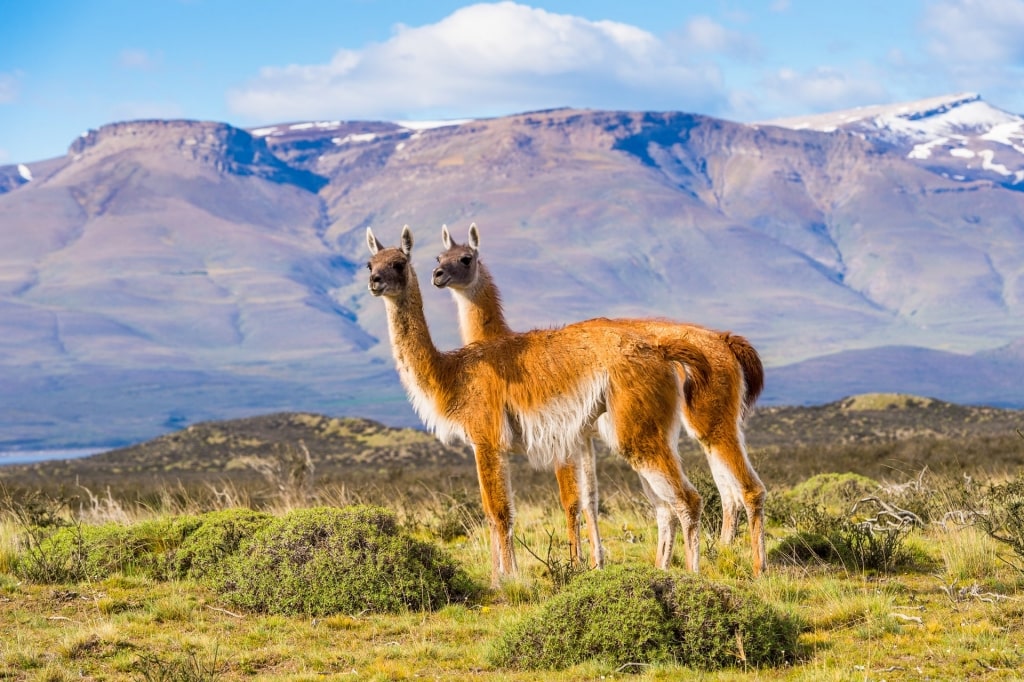
Guanacos
The park is also home to thousands of guanacos—one of the most popular animals in Patagonia—which is the llama-like Camelidae often depicted in Patagonian art and textiles.
Native to South America, guanacos have a habitat that ranges from the northern Atacama Desert all the way south to Navarino Island and the further reaches of Chile. You have a good chance of spotting a herd of them in many of Patagonia’s parks. While they do look cute, they’re still wild, so don’t get too close if you decide to snap a picture.
Sea Lions
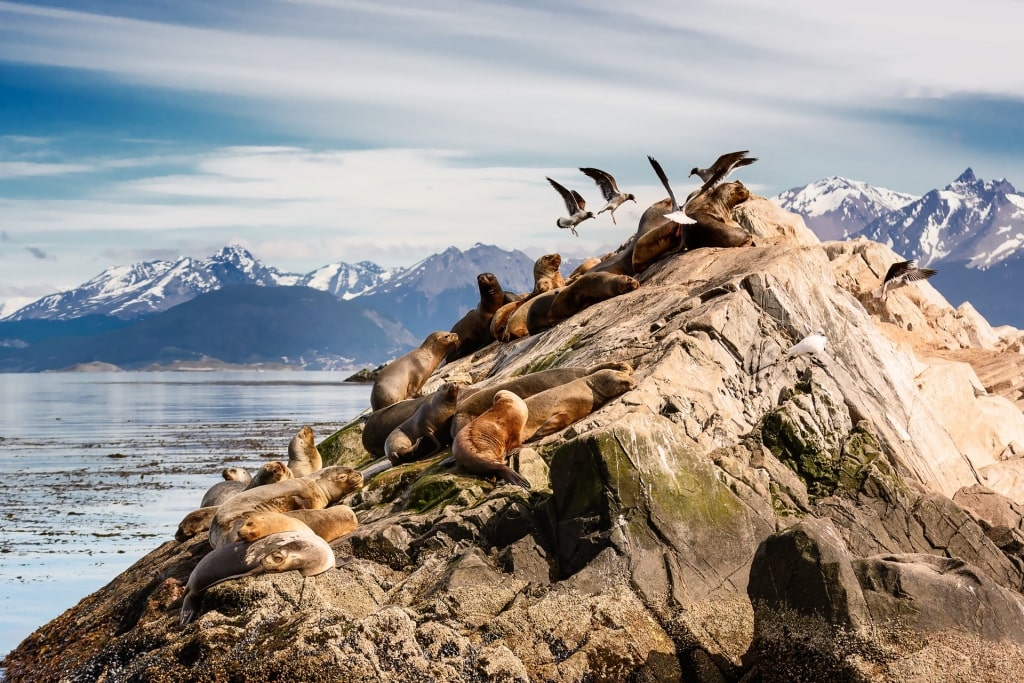
Sea lions
For centuries, Patagonia’s cold water and rich marine life have attracted another must-see species: sea lions. South American sea lions are huge—males can grow to be nearly 10 feet long and more than 750 pounds.
The best place to see them is on Isla de los Lobos (Sea Lion Island). There are usually several dozen in a herd, so it’s easy to spot them sunning, swimming, playing, or “walking” across land. Bring a long-distance camera lens if you have one.
Penguins
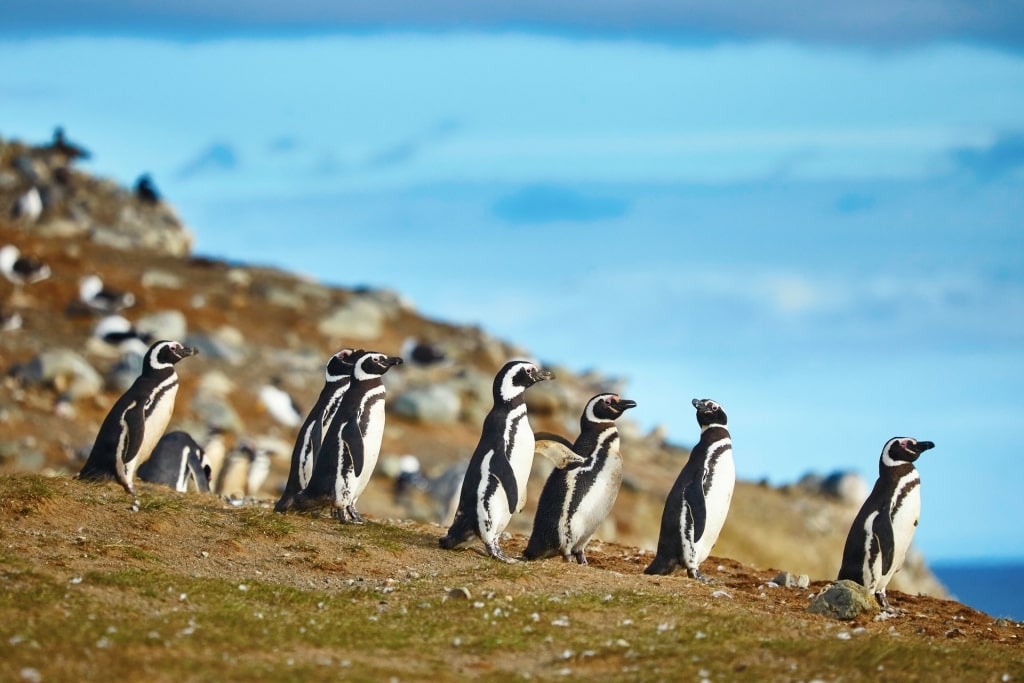
Magellanic penguins
While in Punta Arenas, one of the best places to visit in Chile, plan to visit Magdalena Island—a nature reserve where more than 60,000 of the island’s 70,000 inhabitants are Magellanic penguins. The adult birds are excellent swimmers, while the fluffy babies look somewhat like awkward grey chickens. Though penguins live in a few different places in Patagonia, they’re hard to see almost anywhere else in the world, given the chilly and ice-covered terrain they usually prefer.
Read: Where to See Penguins in South America
Whales
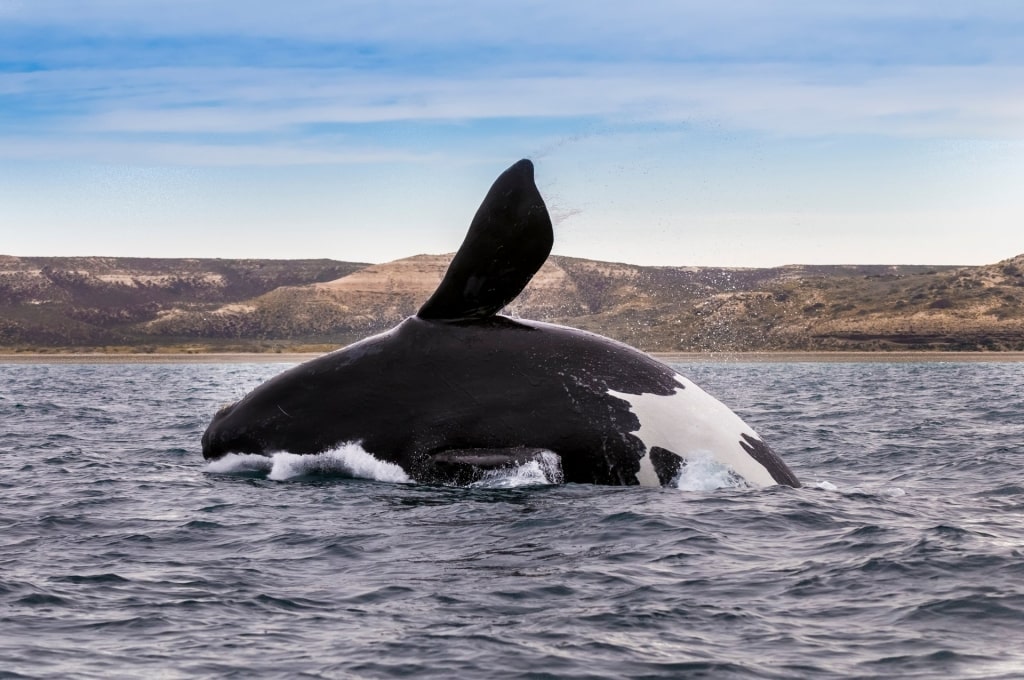
Orca
Some of the most majestic animals in Patagonia are found under the sea. Orcas, humpbacks, and blue whales are common since the water is deep, cold, and sees very little human activity, especially towards Antarctica. If you’re set on seeing whales, one of the best places to visit in Patagonia will be Caleta Valdés, outside Puerto Madryn. While there’s always a chance of spotting whales in any body of water in Patagonia, Caleta Valdés is especially known for attracting orcas when sea lion pups are nearby, which tends to be in December and March.
What else should I know about visiting Patagonia?
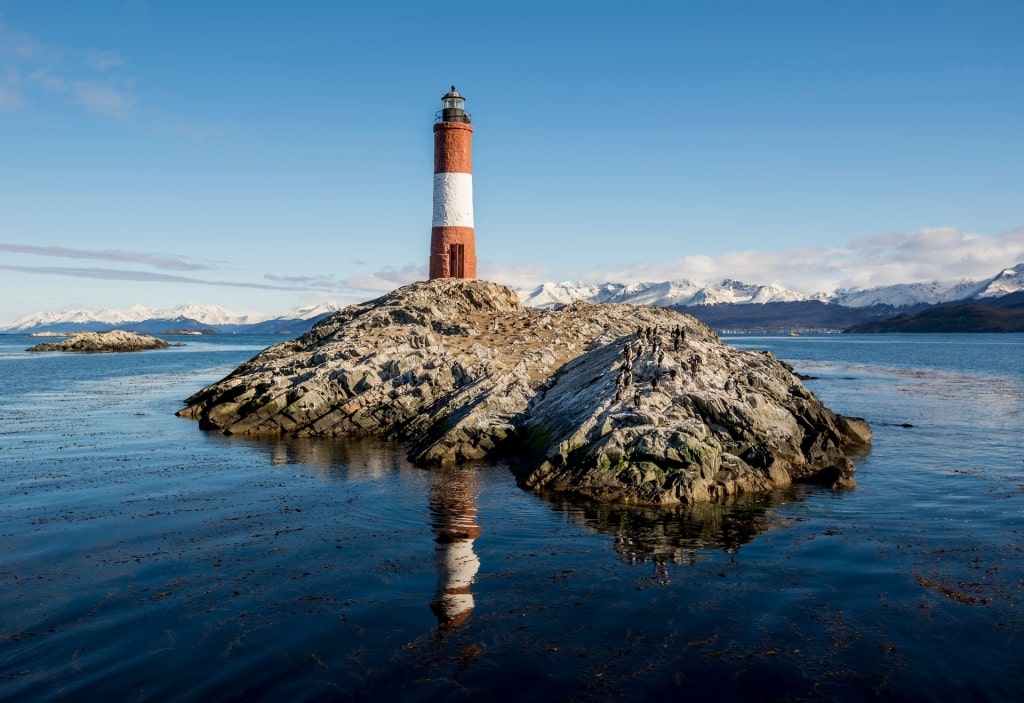
Les Éclaireurs Lighthouse in Ushuaia, Argentina
If there’s one thing to keep in mind when visiting Patagonia, it’s this: don’t be intimidated. Yes, Patagonia is remote, and it has a reputation for ferocious weather. But it’s one of the most stunning places on earth, and both Chile and Argentina have done an incredible job of developing tourist attractions while still feverishly protecting their environment and natural species.
Visiting as part of a cruise ensures you can see some of the region’s most remote sites without needing to arrange your own lodging, tours, or transport, which makes the process much easier. Patagonia is truly a bucket-list destination, and there’s no maximum age or minimum fitness level required to appreciate it.
Read: Insider’s Guide to Ushuaia, Argentina
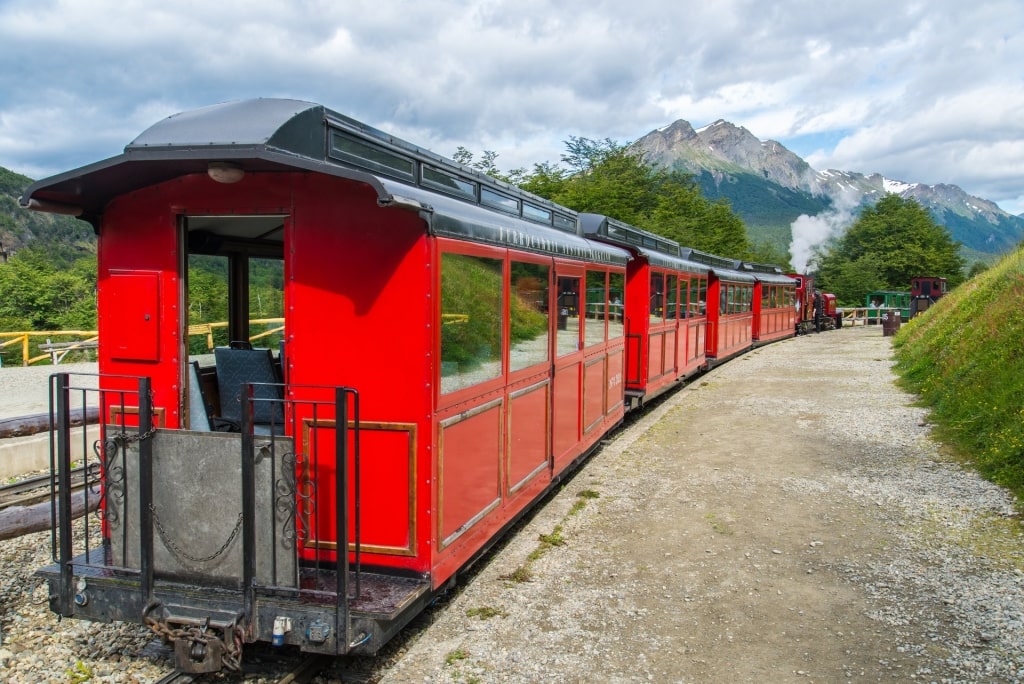
End of the World train in Ushuaia, Argentina
What could be better than a trip to the end of the earth, complete with fabulous food, luxurious lodging, days spent adventuring, and evenings spent cruising along the fjords with a glass of Chilean wine in hand? Patagonia may be far, but traveling here is well within reach for anyone with a sense of adventure and appreciation for the natural world.
Visit our website to browse itineraries online and book an incredible adventure in South America today.
